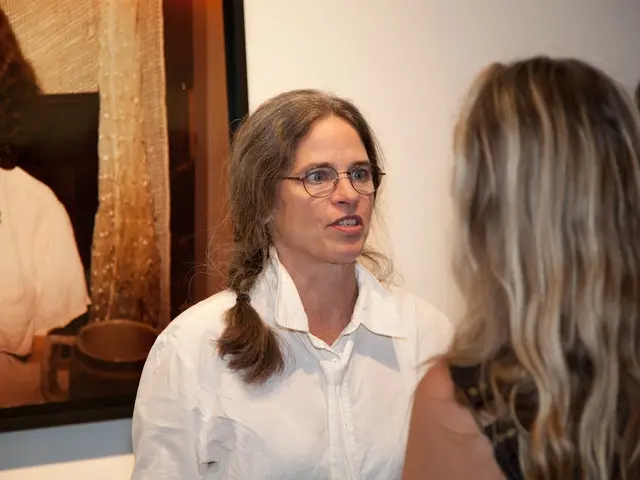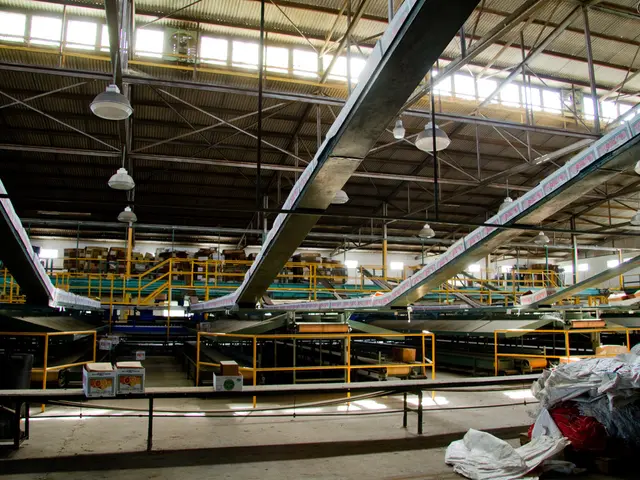Forward-Thinking Producers Focus on Eco-Friendly Packaging As Top Priority
Turning Trash to Treasure
Imagine a never-ending line of garbage trucks, crammed with used plastic packaging, stretching miles and miles along I-95, from Boston to Miami. That's 14 million tons of plastic waste, flushed into our oceans every year, as per the International Union for Conservation of Nature (IUCN). This amount only represents a tiny fraction of the 400 million tons of plastics manufactured annually!
This rampant waste has consequences we can't ignore. It leads to severe ecological and health problems. While we, as individuals, can recycle plastics (yeah, only about 5% of plastics can be recycled), businesses have a greater impact. They can drive the change by adopting environmentally-friendly packaging solutions and materials.
With a bit of creative thinking and the help of modern technology, a greener future is within reach. In fact, some companies are already making moves!
For instance, think about how Starbucks dropped straws and replaced them with sippy cups, slashing the need for a billion straws annually. Barilla Pasta, too, took inspiration from this, and got rid of the plastic see-through window on its boxes. Instead, they now feature pictures on 100% recyclable containers.
Virtual Twins to the Rescue
Close to 80% of a product's environmental impact is defined during its design stage. Sure, many companies can't abandon plastic products overnight. But they can still make a difference by going green in the packaging department through tech innovation.
Take "virtual twins" for instance; these computer simulations allow companies to design, model, and test packaging materials, shapes, and the entire manufacturing process on a virtual factory floor. This technology enables packaging manufacturers to experiment with new eco-friendly materials for sustainable packaging. They can interact with and evaluate digital models of different materials to choose the most sustainable option before crafting a real prototype.
By using virtual twins, Dassault Systems clients in the consumer-packaged-goods industry managed to curtail material consumption by 15%, on average, according to a 2021 report. Additionally, adopting virtual twin lifecycle assessment technologies during the design phase slashed an estimated 7.2% from the product's carbon footprint.
When Simulations Meet Reality
Amcor, a bigwig in packaging manufacture for brands like Pepsi, Coca-Cola, Colgate, and Nestle, is one of the companies using virtual twin technology to create more eco-friendly packaging. By creating digital replicas of its packaging, Amcor's engineers could simulate real-world conditions such as temperature fluctuations, stress, and impact tests, saving money and time in the design process. This digital approach allows designers to experiment with different materials, structures, and thicknesses, while advanced computational models pinpoint where material can be reduced without sacrificing performance.
By lowering the amount of polyethylene terephthalate (PET), a stubborn non-biodegradable plastic, in packages by 100 million pounds yearly, Amcor makes strides towards sustainability. The ability to run over 10,000 simulations on various designs and materials before manufacturing a physical prototype also saves Amcor time and money.
In the quest for sustainability, Boticário Group, a major Cosmetics company, has set the bar high. Using a virtual twin to emulate their factories, Boticário designed a more efficient manufacturing process that can identify and predict potential bottlenecks in real-time, minimizing waste generated. This has helped Boticário recycle more than 97% of all waste back into its operations. In fact, more than 75% of all Boticário cosmetic products contain recycled materials in their packaging.
Winning Over Consumers
It's clear that consumers favor businesses that prioritize sustainability. According to a recent McKinsey report, the majority of consumers are willing to pay extra for eco-friendly packaging, even in developing countries. Innovations like edible drink pods that store liquids without packaging, cutting-edge mycelium packaging made from mushrooms, and 3D printing technology that can reduce scrap waste by up to 90% are paving the way for a greener world.
For a sustainable future, collaborative efforts from industry, government, and research institutions are necessary to redesign products, rethink their use and disposal, and encourage recycling. The future of sustainable packaging is promising, with more companies like Starbucks, Barilla Pasta, Amcor, and Boticário leading the charge towards a plastic-free world. Together, we can protect our oceans, preserve ecosystems, and ensure a brighter, more sustainable future for the generations to come.
- Despite our individual efforts to recycle plastics, it is businesses that can drive significant change by adopting eco-friendly packaging solutions.
- Technology plays a crucial role in this transformation, with virtual twin simulations helping companies design sustainable packaging materials and processes.
- Starbucks and Barilla Pasta are examples of companies that have already made strides by switching to recyclable containers and eliminating unnecessary components like straws.
- By using virtual twins, companies can significantly cut down material consumption, carbon footprint, and design costs.
- Amcor, a prominent packaging manufacturer, uses virtual twin technology to create eco-friendly packaging, reducing polyethylene terephthalate (PET) and saving designs and materials through digital simulations.
- The Boticário Group, a major cosmetics company, uses virtual twins to optimize manufacturing processes, recycle over 97% of waste, and incorporate recycled materials in more than 75% of their packaging products.
- Consumers favor companies that prioritize sustainability, and are willing to pay more for eco-friendly packaging. Innovations like edible drink pods, mycelium packaging, and 3D printing technology are leading the way towards a greener world.
- Achieving sustainability requires collective efforts from industries, governments, and research institutions to redesign products, promote recycling, and encourage sustainable living for a plastic-free, eco-friendly future.








